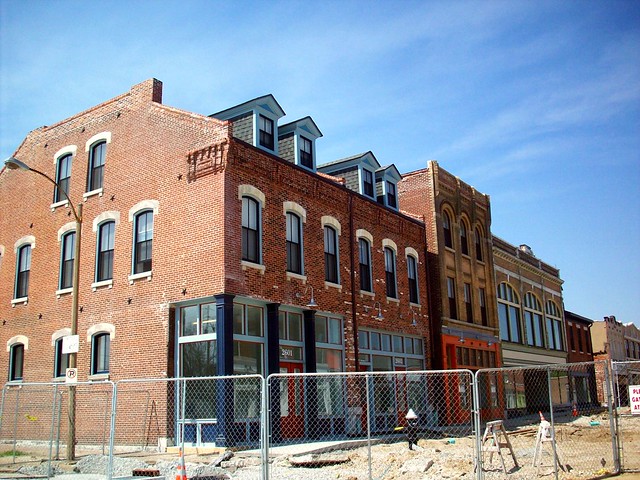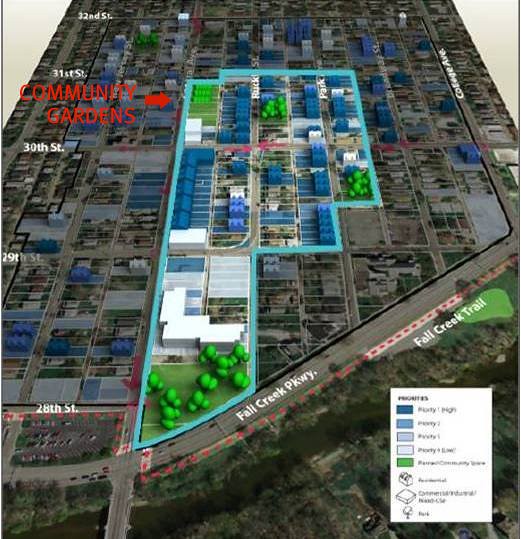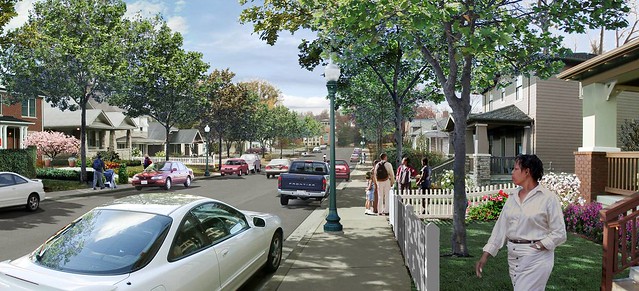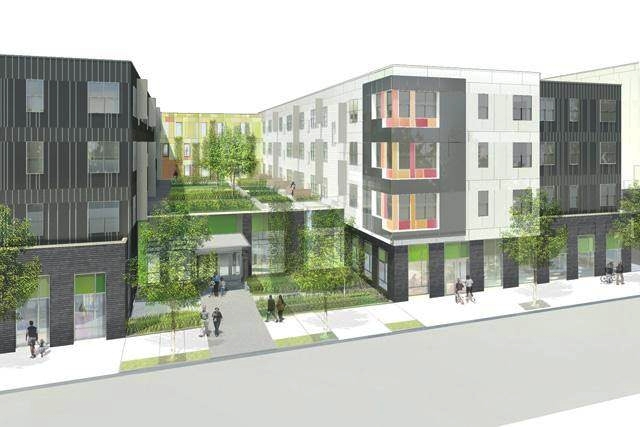Helping neighbors plan their own communities' future: a model for inclusive revitalization

Posted March 28, 2014 at 1:00PM
Sustainable neighborhoods are the building blocks of sustainable cities. Neighborhoods are where development decisions are made and where increments of change – whether good or bad – actually take place, as well as where residents and workers experience the city environment on an everyday basis. Quite literally, sustainability starts in the neighborhood.
This is why neighborhoods are such a point of emphasis in my new book, People Habitat: 25 Ways to Think about Greener, Healthier Cities. It is hard for me to imagine green and healthy cities without green and healthy neighborhoods within cities.
Unfortunately, nothing has been worse for the environmental, economic and social resilience of our cities in the last several decades than the decay and disinvestment of our inner-city neighborhoods and accompanying suburban sprawl. Strengthening our existing communities before building new ones is critical to environmental recovery. But rebuilding our disinvested city places is not easy, and it can be especially challenging to do so with inclusion and with state-of-the-art green practices, bringing environmental benefits to long-neglected populations.
Indeed, both in People Habitat and in a new essay published earlier this month, I wrestle with what I call “the thorny matter” of gentrification: how do we make both the process and the benefits of revitalization more inclusive? Is there an equitable and just way to improve distressed neighborhoods, to welcome newcomers while protecting the interests of longstanding, often minority, residents?
In the essay, I discussed some of the policy measures currently being put on the table to move us in that direction.  There are also some evolving on-the-ground examples of neighborhoods taking the initiative to determine their own future, including some favorites I have discussed in this space such as Dudley Street in Boston and Old North in St. Louis.
There are also some evolving on-the-ground examples of neighborhoods taking the initiative to determine their own future, including some favorites I have discussed in this space such as Dudley Street in Boston and Old North in St. Louis.
In addition, an ongoing project conceived by the organization I work for, the Natural Resources Defense Council, seeks simultaneously to help support more models of homegrown revitalization in more places while adding the key element of environmental sustainability. We work in partnership with community-based client organizations to help provide ideas, tools, and technical capacity that neighborhoods need to restore their vitality and move toward a better future. In collaboration with residents, community development corporations, municipalities, and green planning and investment experts, our partnerships help empower neighbors to restore and revitalize their own communities.
NRDC has supported five communities so far, and in each we have used a comprehensive evaluation tool that NRDC helped conceive and develop – LEED for Neighborhood Development – to help guide our clients in determining their neighborhoods’ strengths and opportunities for improvement. The partnerships then build inclusively drawn, tailored sustainability plans to convert opportunities into stronger and healthier futures. Because investment partners such as community development corporations, and national sources of capital such as the Local Initiatives Support Corporation, are part of the mix, the sustainability plans also become blueprints for investment. (LISC has been a full partner in most of our efforts to date, to the great benefit of the neighborhoods involved.)
While LEED-ND, like other LEED programs at the US Green Building Council, is best known for certifying new green development, its founders always foresaw other uses for the system, including as a planning tool. LEED-ND isn’t perfect (for example, I wish it awarded more credit for historic preservation and the integration of nature into neighborhood development), but it’s the best set of national metrics that we have for estimating a development’s – or a neighborhood’s - comprehensive environmental performance. In practice, we supplement LEED’s standards with additional neighborhood planning goals not sufficiently covered in the system.
We also take care to assure that the relevant municipalities are included, so that they can consider appropriate infrastructure investments and permitting processes during the implementation phase. Each of these communities then becomes a model for others to emulate:
- In Indianapolis, a partnership comprising NRDC, the Mapleton-Fall Creek Development Corporation, LISC, and other entities created a strategy to build local capacity for sustainable practices while pursuing context-appropriate infill development supported by pocket parks. Because of the partnership’s efforts, the Mapleton-Fall Creek neighborhood has been designated as a district of special emphasis in the city’s comprehensive plan.
- In Philadelphia, NRDC assisted the Asociación Puertorriqueños en Marcha, LISC, and the Jonathan Rose Companies in greening a transit-oriented, affordable apartment complex that is now the highest-rated green development in the country under LEED-ND.
- In Boston, we worked with the Codman Square Neighborhood Development Corporation, TNT Neighbors United and LISC on plans to convert a 42-acre degraded neighborhood into one of the city’s environmental leaders with deep
 energy retrofits of its existing building stock, new green buildings, and a redeveloped green street leading to the neighborhood’s new transit station. The neighborhood was able to leverage the partnership’s planning effort into a foundation grant to assist the plan’s implementation.
energy retrofits of its existing building stock, new green buildings, and a redeveloped green street leading to the neighborhood’s new transit station. The neighborhood was able to leverage the partnership’s planning effort into a foundation grant to assist the plan’s implementation. - In Los Angeles, a robust partnership including the Little Tokyo Service Center, NRDC, LISC, Mithun, Enterprise Community Partners and several additional organizations are helping the country’s most important Japanese-American neighborhood – located downtown, three blocks from City Hall at the junction of two major transit lines – protect and enhance its cultural identity while absorbing new development, building more walkable streets, and incorporating new green infrastructure for energy and water management. (Watch for a future article on the impressive progress made so far in Little Tokyo.)
- In Ithaca, New York, NRDC helped Agora Development undertake a massive analytical review of all the city’s major planning, transportation, and development guidance so that Ithaca’s policies will become more supportive of green neighborhoods; among the recommendations are focusing development near existing infrastructure; establishing land-use density minimums; removing minimum off-street parking requirements; and providing incentives for green development.
In addition to these five, we are currently investigating potential collaborations in two more cities.
At NRDC, our Green Neighborhoods initiative supports the institution’s broader Urban Solutions strategy by directly helping underserved populations restore disinvested neighborhoods, putting a human face on sustainability; developing and testing innovative solutions to place-based problems; building model practices for community development corporations and municipalities to emulate; and guiding the implementation of LEED-ND, which NRDC co-founded and helped develop.
Related posts:
- How LEED-ND standards reduce driving and associated emissions: new research (June 12, 2013)
- A low-income community taps homegrown leadership for a brighter future (October 17, 2012)
- Preserving a sense of place in LA's Little Tokyo (April 9, 2012)
- Cincinnati re-opens spectacular park in revitalizing historic district (July 12, 2012)
- The thorny matter of gentrification (March 14, 2014)
- Signs of inspiration and resilience in an inner-city neighborhood (photo essay) (October 5, 2012)
- A remarkable grassroots revitalization matures and thrives in Boston (March 26, 2012)
Move your cursor over the images for credit information.

